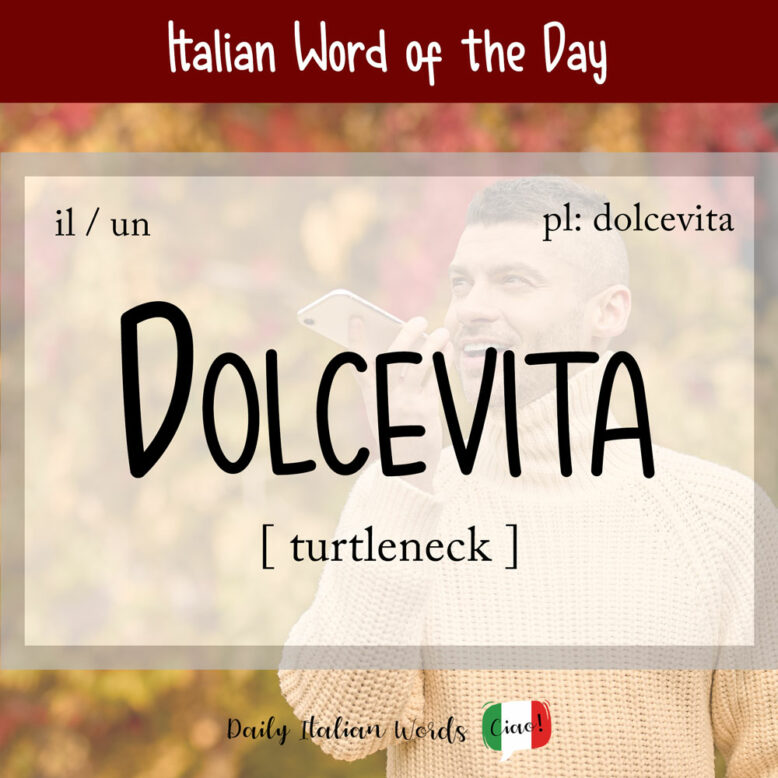Dolce vita or la dolce vita is Italian for the sweet life but when combined into a single word, dolcevita, we get the term for the kind of sweater Americans call a turtleneck and the British call a polo neck.

What’s interesting is that dolcevita apparently gets its name from the 1960s film by Fellini, La Dolce Vita, in which one of the minor characters, Pierone, wears this item of clothing during a brief nocturnal scene in Via Veneto in Rome.
You can watch the scene below at minute 1:57:51, where the main protagonist Marcello who wears sunglasses (played by Marcello Mastroianni) asks Pierone (Giò Stajano) what happened after the two men get into a fight. (Pierone is the man on the right side of the frame.)
Although turtlenecks existed even before the film was released, they were worn, above all, by the troops of various armies during the Second World War, as well as submariners.
Despite ending with an a, dolcevita is a masculine noun. In its plural form, the final a does not become an i unlike other masculine words in Italian.

Dolcevita may also function as an invariable adjective, or in other words, an adjective that does not change for the feminine or plural. It usually modifies the words maglione (sweater, or jumper in the UK) or maglia (shirt).
D’inverno mi piace indossare i maglioni dolcevita.
In the winter I like to wear turtlenecks.
The dolcevita should not be confused with the lupetto (mock turtleneck) which is a shirt whose neck reaches half height and does not fold upon itself. It is called as such because it is reminiscent of the uniform the Cubs (Scouts between 7 and 11 years of age) wear.
Heather Broster is a graduate with honours in linguistics from the University of Western Ontario. She is an aspiring polyglot, proficient in English and Italian, as well as Japanese, Welsh, and French to varying degrees of fluency. Originally from Toronto, Heather has resided in various countries, notably Italy for a period of six years. Her primary focus lies in the fields of language acquisition, education, and bilingual instruction.


